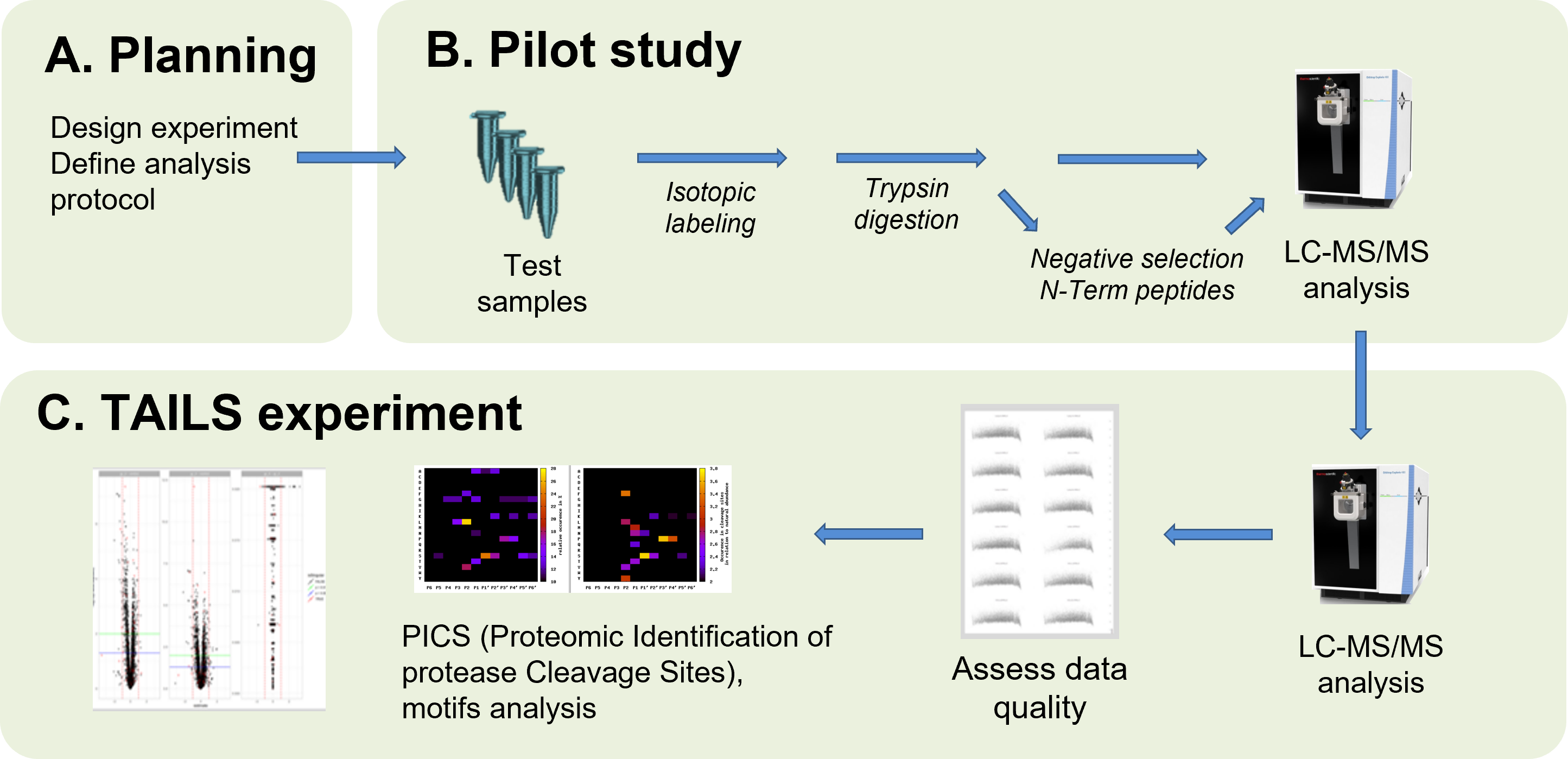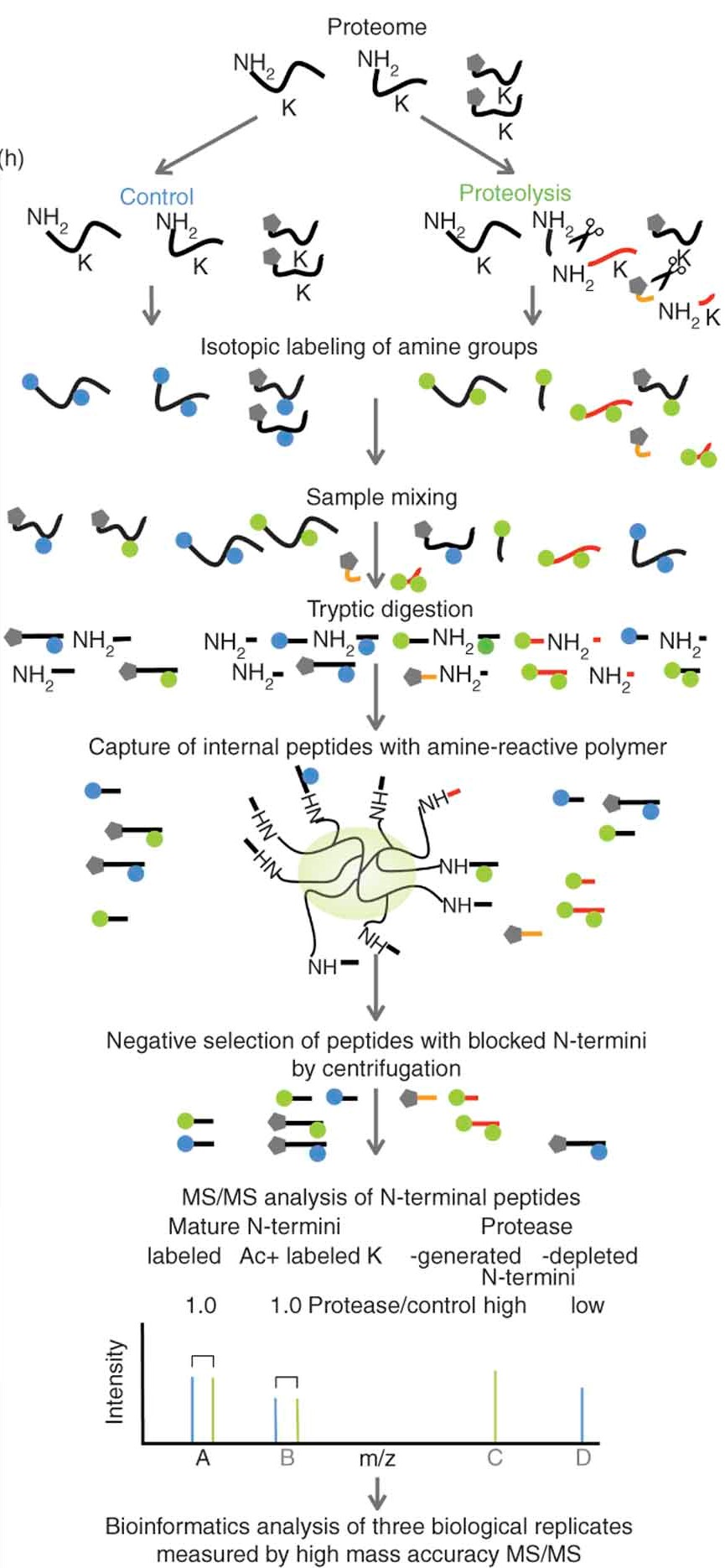Proteomics > Which service should I request? > Proteome Identification and Quantification > N-Terminal Characterization (TAILS)
For detailed information, check the Nature biotech, original TAILS paper, or the Nature methods protocol.

A detailed overview of the TAILS sample preparation protocol is shown below

Please contact us at proteomics at fgcz.ethz.ch for a meeting, or directly contact your coach If you already have a B-Fabric project at FGCZ.
N-Terminal Characterization (TAILS)
Table of contents
General description
Terminal amine isotopic labeling of substrates (TAILS) is a mass spectrometry-based method frequently used for the identification of N-Terminal fragments of proteins present in a complex mixture. TAILS is typically applied for the identification of substrates of proteases.For detailed information, check the Nature biotech, original TAILS paper, or the Nature methods protocol.
Workflow
Our default workflow for TAILS analysis consists of 3 steps, and typically makes use of TMT tags (Thermo) for labeling:
A detailed overview of the TAILS sample preparation protocol is shown below

workflow overview, adapted from Nat Biotechnol 28, 281–288 (2010)
A. Planning
As a first step, we need to clarify the goal of the project and clarify the analytic and bioinformatics strategy. A proper experimental design will be defined together with FGCZ staff.Please contact us at proteomics at fgcz.ethz.ch for a meeting, or directly contact your coach If you already have a B-Fabric project at FGCZ.
- Choose appropriate design for main experiment (e.g. two-group analysis, factorial)
- Discuss the expected biological variance of the experiment and of the protein extraction
B. Assay development
Goal:- Did the sample preparation perform as expected (signal quality, labeling efficiency, pullout efficiency)?
- Did the LC-MS measurement perform as expected (critical points: Quality of signals for std. peptides)?
- Was the choice of LC-MS method appropriate for the sample (critical points: coverage of LC-MS features by PSMs, number of IDs on Proteome and N-terminome level, proteome coverage)?
- Was the quantitative accuracy as expected?